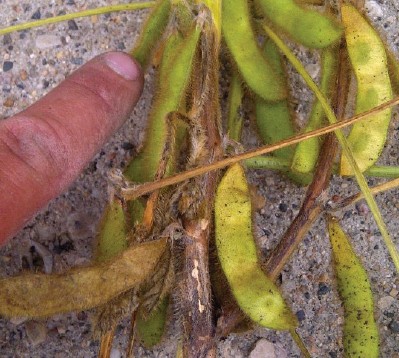Predicting Your Corn Harvest Date
In both the last two growing seasons, the timing of maturity has been fairly predictable. 2012 featured early planting and hot weather, while 2011 had a warm finish. This year, the propane that has been sitting in your tanks for the past two seasons may get some use.
An old phrase in corn country predicts “pollinated by August, dented by Labor Day.” Some of our later planted corn may have trouble, but most of the corn in our region should dent within this window. Physiological maturity occurs 50-65 days after silking, with the kernel moisture around 30%. Many of our hybrids are rated for Growing Degree Day accumulation from planting to black layer or maturity. In our area, this ranges from 2180 (79 day) to 2450 (100 day). We can make up for a late or cool start in May/June by accumulating more units in late July and August. This slightly compresses the grain fill period, and can lead to the hybrid finishing faster than ideal. This is what occurred in some fields in 2011 with the cool, wet start and dry, warm finish. With abnormally cool weather this year in late July and August, we did not get ahead, but didn’t fall behind much either.
Yield robbers during corn reproduction include poor pollination during R1 (Silking), leading to kernels not finishing. During R2 (Blister), some pollinated kernels at the tip may be aborted due to stress. The plant is then able to better fill the rest of the kernels on the cob. At the R3 (Milk) stage, stress can still cause the plant to abort kernels, but with less severity than in R2. In this stage, the plant is still about 45 days from R6. Kernel abortion does not occur during R4 (Dough). The plant fills the kernels, and stress can reduce final kernel weight at this stage, reducing the final yield.
The R5 (Dent) stage occurs about 34-40 days after silking, as the corn plant is nearing maturity, with about 20 days remaining. Data from the University of Minnesota shows that a killing frost at this time of early dent can cause yield losses near 40%. Yield loss during late dent (below half-milk line) is closer to 12%. When the kernel has reached black layer, the plant is at the R6 stage, or physiological maturity. The kernel has attained its full dry weight, and yield is set.
The kernel then begins drying down until it reaches a point that is optimal for harvest. This is why I suggested we may be using propane this fall. We have harvested some dry corn during the past seasons. While it may be tempting to save the drying expense, the amount of volunteer corn I have seen tells me that we’ve left some profit in the field. Ideally, corn should be harvested at 19-25% moisture. For safe storage in an air bin without artificial drying, corn must be at 21% or less.
I hope this helps to make an approximation on corn maturity, and to better prepare for harvest timing. As with most variables in corn production, the environment can alter these estimates. Look back to when your field was at R1 (Silking) and estimate from there.











